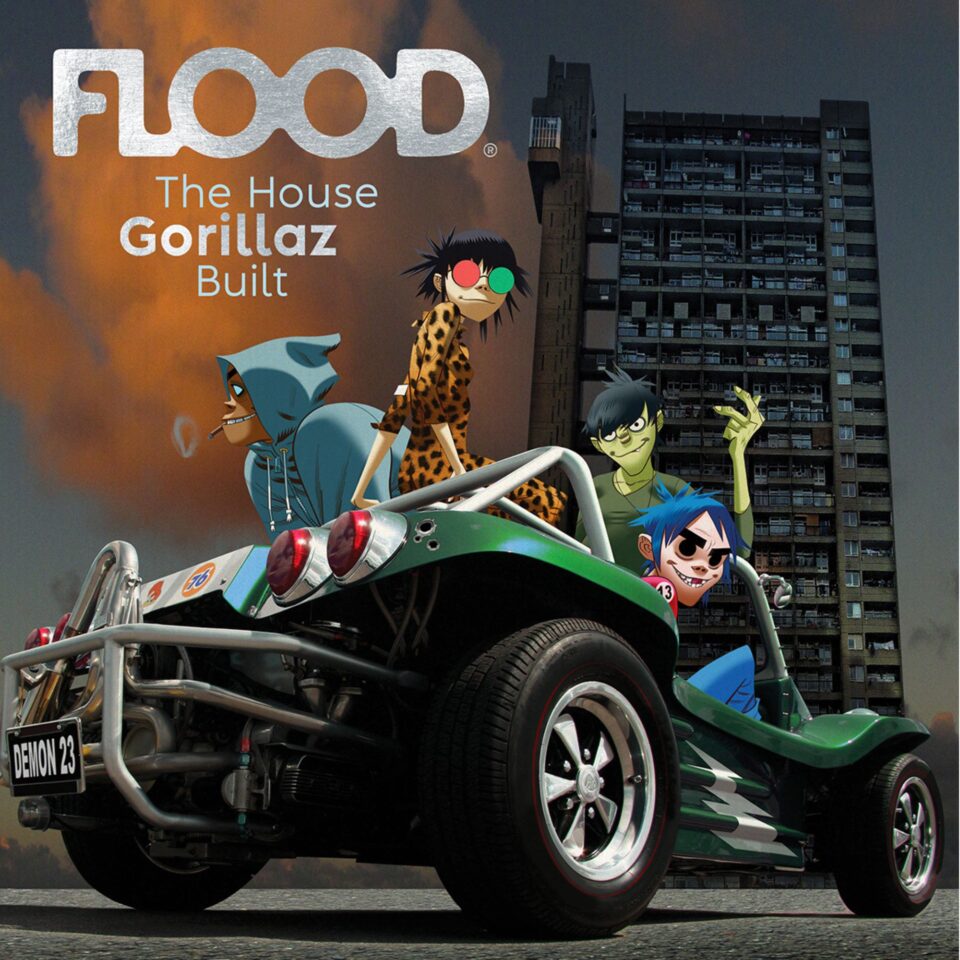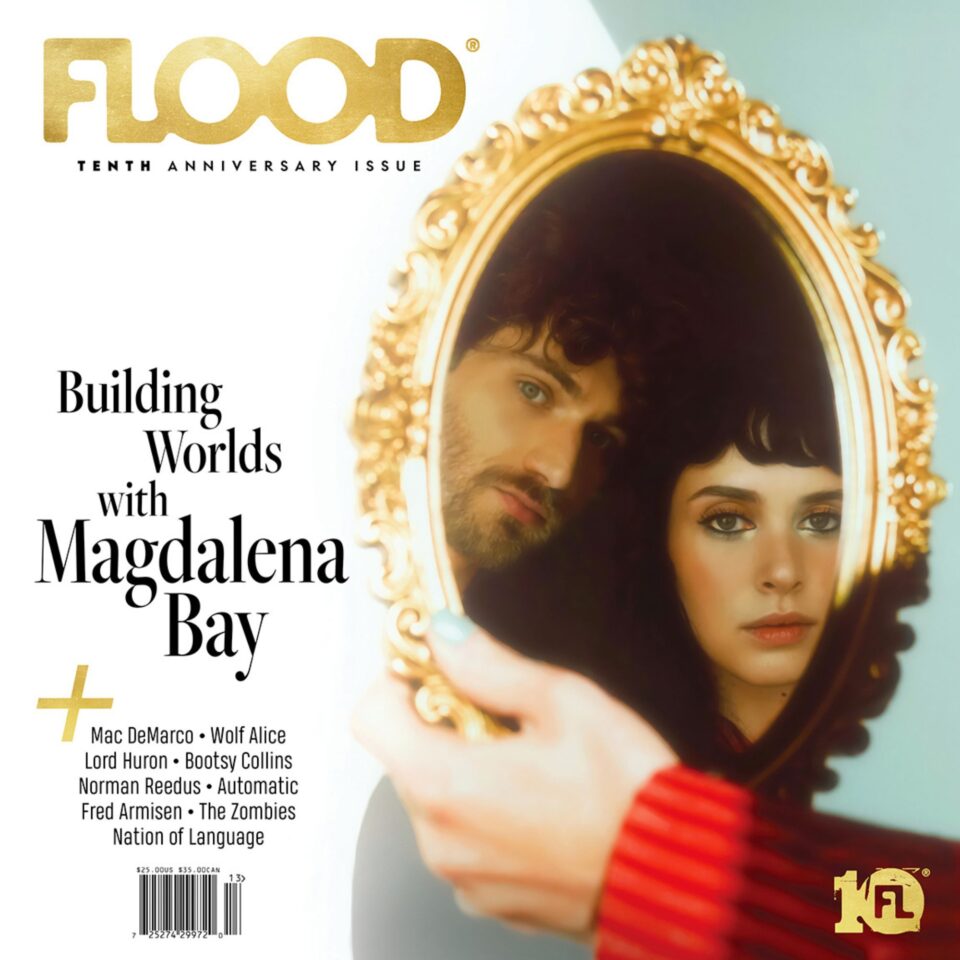Over 21 years ago, English author Neil Gaiman invited stop-motion director Henry Selick (The Nightmare Before Christmas, James and the Giant Peach, and, yes, Monkeybone) to adapt his newest novella, a children’s horror fable titled Coraline. Seven years later, that film—featuring the acting talents of Dakota Fanning, Teri Hatcher, Keith David, Jennifer Saunders, Dawn French, and Ian McShane—was released in theaters in glorious 3D.
Stop-motion animation is all about minutiae, subtlety, and care. Hundreds of hands, thousands of hours, a million moving parts—all working in tandem to create something that appears seamless and whole. And yet, to celebrate what is perhaps its greatest achievement, I choose reckless abandon, a critical bull-in-the-china-shop approach. I’m here to convince you that not only does Coraline hold up all these years later, but that it might well be one of the greatest films of all time with five not-at-all-hyperbolic claims.
Strap in folks, I am prepared to show my work.
1. Coraline is the greatest Neil Gaiman adaptation of all time
Neil Gaiman is one of the most prolific modern fantasy/horror writers this side of Stephen King, working in everything from TV and film to comics and, of course, literature. With its mythological imagery and broad storytelling strokes, his work is ripe for adaptation and has seen such treatment many times. The most prominent of these adaptations has been a trio of streaming series that have popped up over the last half decade: American Gods, Good Omens, and The Sandman. As far as streaming series go, these land somewhere between very good and almost entirely forgettable. Then there’s Gaiman’s screenplay for Beowulf, incidentally another attempt at 3D visual mastery that’s as muddled and visually off-putting as Coraline is brilliant. Ultimately, none of these titles make a compelling argument for being anywhere near the creative achievement of Coraline, which takes a small, contained fable and expands it into something unforgettable.
2. Henry Selick is the greatest stop-motion director of all time
If you know anything about stop-motion adaptation, it’s likely that the medium is incredibly difficult and time-consuming to work in. Though the modern history of stop-motion goes all the way back to 1933 and King Kong’s ascension to the top of the Empire State Building, there isn’t exactly a deep bench of directors who’ve chosen to make this their life’s work. Even Selick, who’s made only one movie outside of the medium, has only been able to bring four stop-motion features to fruition over the course of his 30-some-year career. And he’s not alone. Legends of the genre include artists like Rankin and Bass (Santa Claus Is Comin’ to Town), Will Vinton (The California Raisins), and Ray Harryhausen (The Golden Voyage of Sinbad)—none of which were able to exceed Selick’s output. Even Wes Anderson, whose meticulousness and all-consuming artistry makes him perfect for such a medium, has only really dipped his toes into the stop-motion world, albeit with one of the genre’s most enduring entries Fantastic Mr. Fox (wasn’t there also something called “Isle of Dogs” at some point?).
The protracted process means you absolutely must hit on the films you do make—and it's here that Selick really begins to separate himself from the crowd. From 1996’s macabre, nightmare-inducing James and the Giant Peach adaptation to 2022’s criminally underrated psycho-trip Wendell & Wild, Selick has built a singular filmography intent on exploring the darkest edges of the human psyche. Then there’s Coraline’s closest cousin, The Nightmare Before Christmas. That’s right, Henry Selick directed The Nightmare Before Christmas. Read that again. Did you notice Tim Burton’s name anywhere? Neither did I. If you take anything away from this portion of my argument, let it be this: Burton has too long ridden Selick’s coattails to untold gains in merch sales and inflated reputation due to Spielberging his producer’s credit above the title for a movie that continues to be as iconic as it was upon its 1993 release.

Other Mother, voiced by Teri Hatcher, and Coraline, voiced by Dakota Fanning, are seen in the animated movie “Coraline.” The USCCB Office for Film & Broadcasting classification is A-II — adults and adolescents. The Motion Picture Association of America rating is PG — parental guidance suggested. Some material may not be suitable for children. (CNS photo/Focus Features) (Feb. 4, 2009) See MOVIE REVIEW (EMBARGOED) Feb. 4, 2009.
The only true competitor for Selick’s title is Nick Park, creator of Wallace & Gromit, Shaun the Sheep, and crossover hit Chicken Run. Park, like Selick, is fully committed to stop-motion and the relative insanity of working in such a medium. Though his films are undoubtedly charming, imaginative, and extremely British, Park is essentially working in one mode, repeating not only characters from film to film but also the rounded, palatable style of animation. Selick’s characters (save for Jack Skellington) might not be as instantly recognizable, but the movies themselves—ingenious, baroque, and, at times, radical—far exceed the whimsical pleasures of even Park’s best.
3. Coraline is the greatest-ever achievement in ensemble voice acting
There’s a longer piece to be written about the dwindling art of voice acting in modern movies, but it's become clear that having big-ticket names attached to your film has become far more important than whether those actors are right for the role (please spare me any more Chris Pratt voice castings, I beg you). Perhaps it’s a stroke of luck that stop-motion animation discourages such star-hunting. Because movies like Coraline take so long to make, it doesn’t really make sense to go after the biggest names of the moment, which will likely have passed when the movie is eventually released. For instance, Dakota Fanning signed on to play Coraline in 2005, when she was 11 years old, only to have the movie hit theaters when she was 15. That’s the difference between her playing the little girl in Charlotte’s Web and playing Cherie Currie in The Runaways.
This gave Selick and company the opportunity to cast based purely on fit, leading to some of the best voice acting this century. I wouldn’t call myself a Teri Hatcher fan, per say, but her performance as both Coraline’s overworked, perpetually annoyed mother and her increasingly clingy and eventually arachnoid “Other Mother” makes you question why her second act took place on Wisteria Lane rather than within the voiceover booth. John Hodgeman is equally adept at playing the two sides of Coraline’s father—part stressed-out patriarch, part vaudevillian henchman—giving even moments of levity portentous undertones.
The voice acting really shines, though, as the story’s peripheral characters begin to emerge. Ian McShane as pot-bellied acrobat Sergei Alexander Bobinsky! British comedy duo Jennifer Saunders and Dawn French as the indelible Spink and Forcible! Arguably one of the greatest voice actors of our time, Keith David, providing his dulcet tones as Coraline’s fiercest companion, the Cat! Aside from this role, each of these performances must change dramatically when shifting from the “real” world to the “other” world, a nuance handled deftly by all involved.
4. Coraline is the best movie of 2009
*Cracks knuckles* Time to construct a truly undeniable argument in which no one will find fault. Coraline was, is, and will always be the best movie of 2009. When Gaiman first handed the film to Selick, the story contained enough material for what he claimed would be a 47-minute movie. The bones were there, but Selick and company needed to flesh things out. In many ways, the solution was radically simple. So many animated movies (and children’s films in general) are so fearful of losing our attention that they never really earn it in the first place. The Other World, with all its fantastical grandeur, is clearly the selling point of Coraline. But rather than rush headlong down the rabbit hole, Selick chooses to slow-play the first act of the film, placing us within the aching boredom of Coraline’s new home. This is a place where a kink in the carpet and a window-counting expedition count as “fun,” and drab grays stand in stark contrast to Coraline’s blue hair and bright yellow raincoat.
When the film does break containment, tumbling down a tunnel of lavish indulgence, we’re swept along with it. Even if we identify the corruption at its core before our hero does, who among us isn’t charmed by breakfast for dinner and a piano that literally plays it player? Coraline simply wants what we all long for: attention. Of course, that attention comes with a few button-shaped conditions, which make for a genuinely unsettling final act. Like any great fable, Coraline is both simple in construction and able to be endlessly analyzed, a fever dream and Freudian nightmare viewed from a dozen canted angles. Arguments may abound for other 2009 heavyweights: A Serious Man, Ponyo, Inglourious Basterds, Avatar, The Hurt Locker, or the previously mentioned Fantastic Mr. Fox. Some of these films made more money, some won more Academy Awards, but none reach the consistent highs of Coraline.
5. Coraline is the best animated film of the century
If my argument for Coraline being the best film of 2009 revolves around the execution of its story, my argument here is centered on the pure impossibility of its creation. I’ve already spilled plenty of ink about the harrowing experience of stop-motion animation in general but this is, without a doubt, the high point of the medium. You can watch any number of featurettes to get an idea of the scope of the undertaking, but really, it’s all there on the screen. Even with the behind-the-scenes knowledge of how they did it, you really can’t wrap your mind around something like the Amazing Garden or the dancing mouse circus and the sheer amount of creative labor present throughout the film. Pause any frame of Coraline and you have a greater artistic achievement than the entire history of Illumination Studios.
There’s stiffer competition than the Minions, of course, but it's the way Coraline synthesizes the best of what animation can accomplish that places it above the rest. Blending the artistic grandeur of Across the Spider-Verse, the subtle storytelling magic of WALL-E, the singular imaginative force of Don Hertzfeldt, and the rodent hijinks of Ratatouille, Coraline is, simply, the best. I’m so glad we can all agree.







